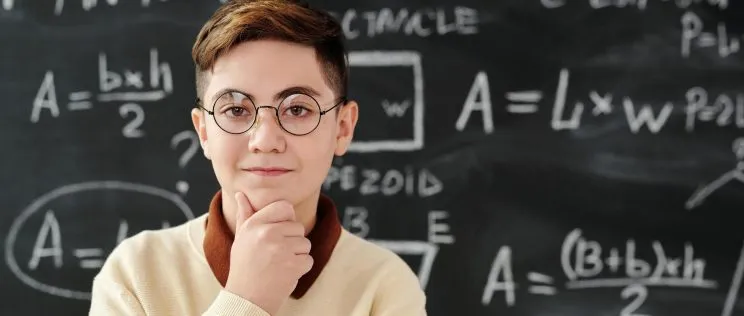How to Teach Fractions
reviewed by Jo-ann Caballes
Updated on September 26, 2024
When parents decide to teach their children math, they can face their own inability to explain concepts clearly. This is especially true for explaining fractions to kids: a concept that seems fairly easy and straightforward can be a test for parents who do it first or simply don’t have a talent for teaching. However, there are easy ways to teach fractions even if you, as a parent, haven’t been a math genius in school! This article will have you set with tips on how to learn fractions in a fun and engaging way.
How to explain fractions
The easiest way to learn fractions for a kid is to make them understand that fractions are used to represent smaller pieces or parts of a whole. Nevertheless, fractions can be baffling for kids, as when they are first introduced to them, they can hardly imagine that there are numbers between 0 and 1. Additionally, fractions don’t act or look like most of the numbers we’re dealing with in our everyday lives. For this reason, it creates a lot of frustration and anxiety for students, teachers, and, naturally, parents who try to support their child’s learning at home.
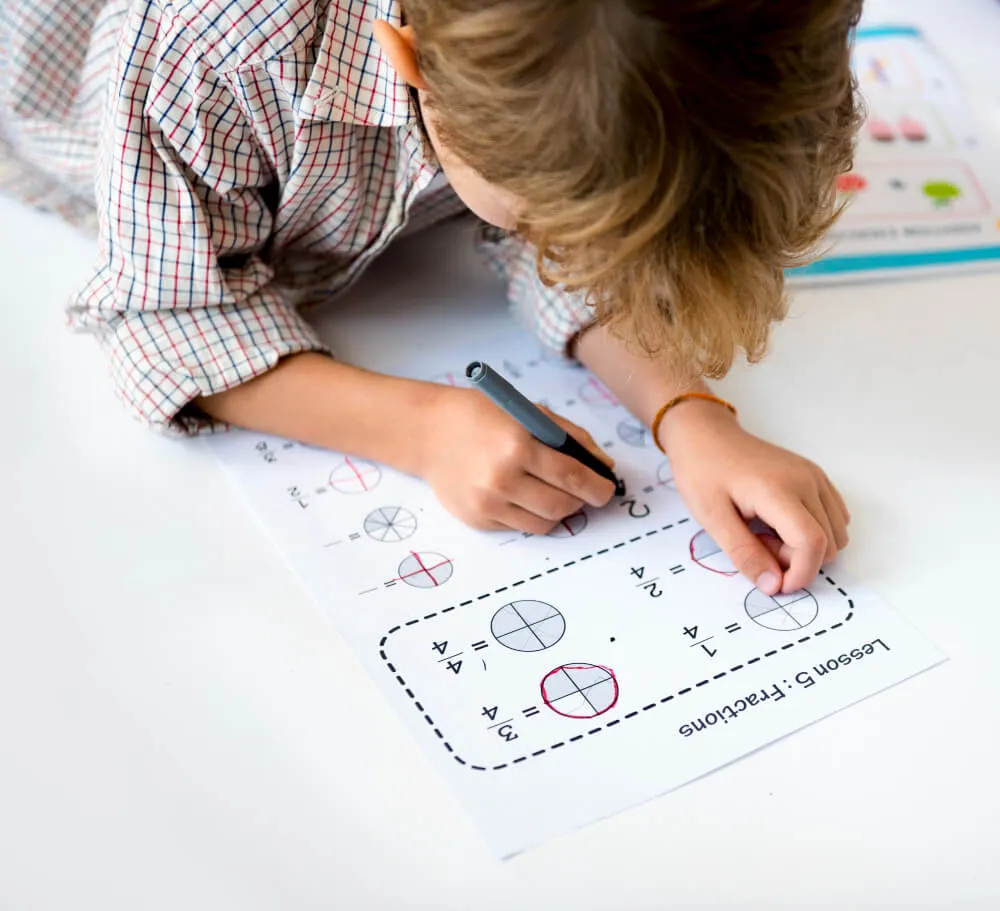
Children first define numbers for counting. They can identify a group of objects and count them one by one. The next stepping stone would be learning the base — a ten. It allows them to organize the objects into tens and then count large quantities. And just as they are comfortable with all of it, fractions come. Now that counting is over, kids have to break wholes into halves, thirds, or fifths.
On top of that, kids struggle with how fractions look. They may have difficulties understanding whether they are one or two numbers, why they have to flip the second fraction to divide, and why a bigger denominator makes a fraction smaller. You may think that an easy way to teach fractions is avoiding them altogether, but students with fractions ‘blanks’ will struggle throughout their math education. Ratios, slope, and algebraic expressions all involve knowing fractions, so laying a good foundation now will pay off in later years.
When do kids learn fractions?
Fractions are typically introduced in the 3rd grade. Children between 8 and 9 years old may find fractions confusing, especially if they haven’t been properly prepped for them. Some kids can easily grasp fractions concepts, as they may already know them from day-to-day situations (like half of an apple or a chocolate bar). At the same time, others may not be able to connect these concepts as quickly as parents and teachers expect them to.
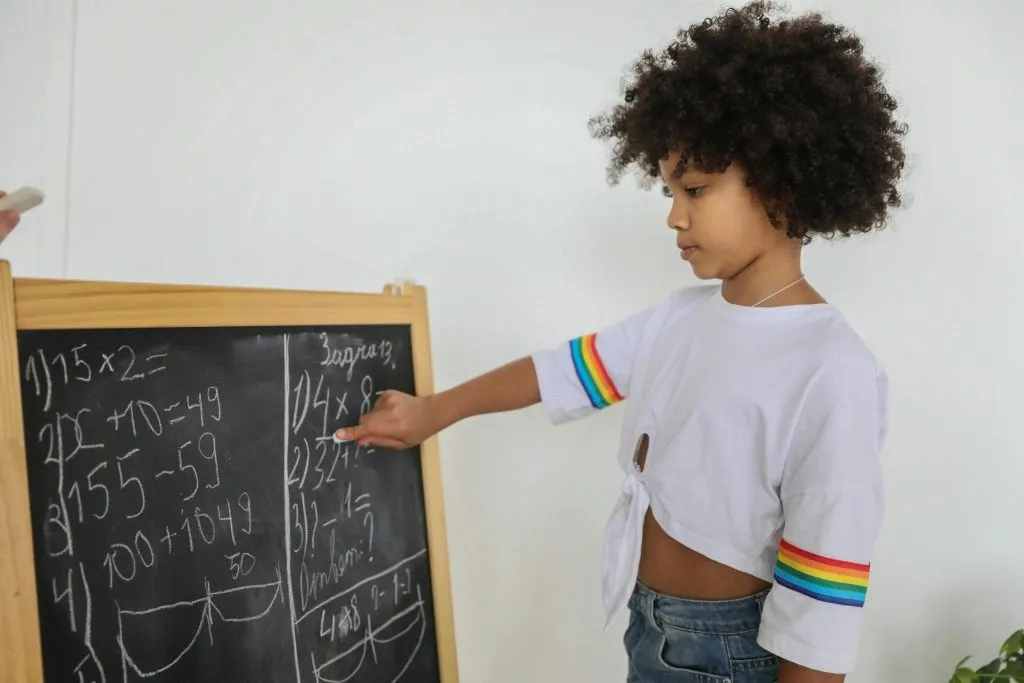
The important thing is to show children how we use fractions in everyday life. Practical examples are the way to go, especially if your student is falling behind on grade-level content.
How to teach fractions to kids with Brighterly
If you’ve tried every tool in your arsenal to teach fractions to your young one and haven’t been particularly successful, you might feel like you’re failing as a parent. Throwing a wrench into the works with ineffective strategies won’t do you or your child any good, so looking for a better solution, like online math tutoring, is a good option.
Online math tutoring platforms like Brighterly offer you an easy fix, as you get both fun and effective one-on-one sessions that will help your kid figure out any complex math concepts with ease. Here’s how Brighterly can turn your child into a math wizard in no time.
- Interactive lessons
- Personalized learning plan
- Expert-driven tutors
- Advanced teaching approaches
- Regular progress reports
Interactive lessons
At Brighterly, we believe that boring math lessons can kill off your kid’s desire to learn math. That is why our tutors engage your children in every task, making it fun, dynamic, and engaging. Does your kid have trouble concentrating? No biggie, our tutors are equipped with science-proved approaches to keep your child motivated and concentrated until the last minute. They know all of the fun ways to teach fractions, so you can dedicate your precious time to building great relationships with your young ones rather than figuring out how to teach them.
Personalized learning plan
Before Brighterly tutors figure out the curriculum, they analyze every kid’s math knowledge during a trial lesson. This means that if your child has any blanks in the math area, they will be filled with a personalized learning plan tailored to your kid’s needs. We also align our curriculum with the US standards, so you don’t have to worry about your child’s math skills going in the wrong direction.
Expect-driven tutors
Top-rated math tutors are what make Brighterly so special. They know how to make math accessible even to the most struggling students. We ensure all of our experts are professionally trained and have teaching methods that are result-driven and student-centered.
Advanced teaching approaches
Good teaching approaches are a significant part of effective teaching. Brighterly tutors make sure their teaching methods are relevant and suitable to students’ needs. They incorporate advanced approaches to teach math as well as active mental breaks so your kid stays on top of their abilities.
Regular progress reports
Periodical progress reports keep you in the loop of your kid’s advances in math. Depending on your plan, you will be getting regular progress reports that track your kid’s progress and areas of improvement. For instance, if your kid has to figure out fractions further, you’ll know what’s going to be taught in the next lessons.
What is the easiest way to learn fractions?
The easiest way to learn fractions is to show how you can apply them through day-to-day situations. So, if you’re wondering how to explain fractions to kids, look at what you do every day and see what you can relate to it. As kids may only encounter fractions in math class, it’s a good idea to take them outside the classroom and explore fractions together in everyday scenarios.
Let’s say you have to refuel your car. Take your kid along with you to a gas station and show them the pumps. It’s usually measured in fractions of gallons, so they are divided into halves and quarters. Since the tanks don’t hold the same amount of tanks, it is easier to fill them up. Showing your kid that can help them understand fractions more easily as it’s a real-life example of how you can use fractions.
Another example is cooking. Again, you need fractions to measure ingredients so that you don’t mess up the recipe. The wrong fraction measurements of sugar or salt can ruin a pancake mix and other kinds of food. You can show fractions on halves of the lemons or other fruits and vegetables. Sometimes, you need to double the ingredients, so wholes come into play instead of halves or halves instead of quarters. This is one of the easiest ways to learn fractions, so get your kid in the kitchen and cook together.
If you’re tired of cooking, organize a pizza party! A cut pizza is a great way of explaining fractions to kids, and the best part is — you don’t need many tools. Every time you eat a couple of pizza pieces, ask your kid how many slices are left and what fraction of the pizza that represents.
Figuring out time is another way to teach how to understand fractions. If your young one feels comfortable with the clock, you can start discussing fractions in terms of time. For example, explain how 1/2 an hour is 30 minutes and how 3/4 of an hour is 45 minutes. Don’t forget to use the clock to visualize this.
How do you teach fractions step-by-step?
To teach fractions step-by-step, you must not forgo the proper terminology. In other words, use the words numerator, denominator, and fraction bar. This can confuse your young one at the beginning, but it will save them plenty of time and energy later on. Here is a step-by-step guide to learning fractions for beginners.
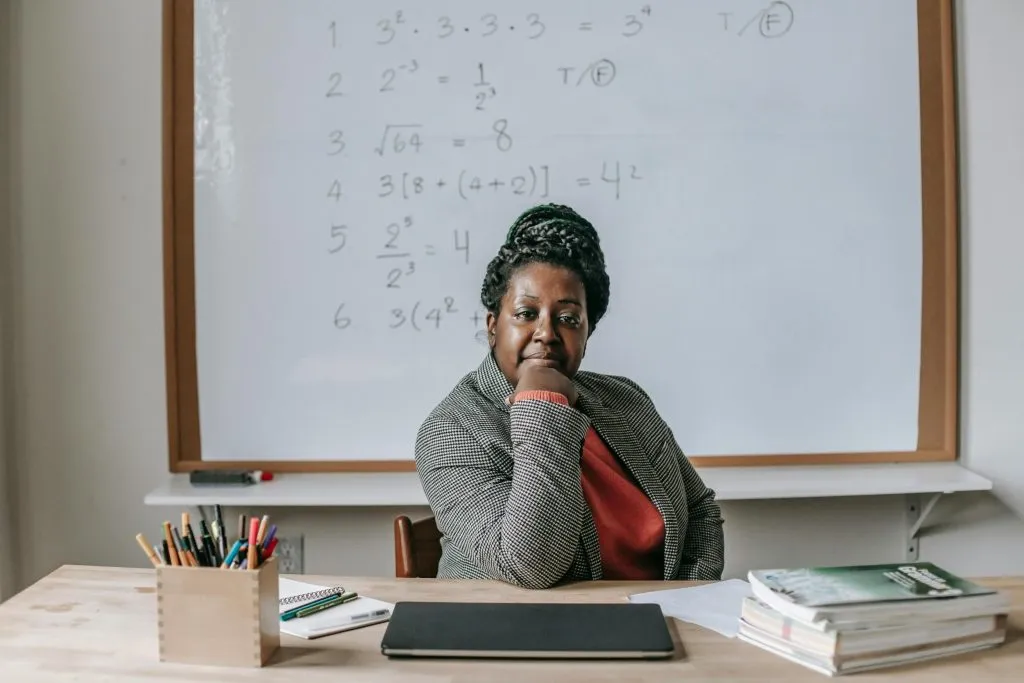
Step 1. The Whole
You may show the whole object using a fruit, for example, an orange. Then, ask your kid if they ever ate a whole orange. You may also show them an orange picture and write the number 1 on the board. Explain to them that 1 means one whole.
Step 2. The Denominator
The next step would be to explain to the kid that they can share their orange. Prepare 4 oranges.
If they want to share it with mom, they must cut it in two. Ask them how many pieces are there, and write 2 on the board.
Next, if they want to share it with mom and dad, they must cut it in 3. Do the same here: cut the orange into three pieces and write 3 on the board.
Next, progress to 4 pieces and write 4 on the board. Ask your kid to compare the size of the pieces within each orange. It’s important that you cut the oranges into equal sizes.
Step 3. The Fraction bar
Explain to your kid that you now need a ‘slicing symbol,’ which is a fraction bar. Draw the bar above the 2, 3, and 4. Explain that the number below the fraction bar is called the denominator because it’s down below the fraction bar. The dominator indicates how many equal parts are in the whole orange.
Step 4. The Numerator
All of these steps are important for teaching fractions to kids. At this stage, you get to eat the orange! Hand one piece to your kid, and write 1 on top of the fraction bar. Explain that this number is called the numerator. The numerator indicates how many pieces you get out of the whole orange.
Explain that they got one piece out of two pieces, and add that this is one half. Continue the process to make 1/3, 1/4, 2/3, 2/2, 3/4, etc.
How to teach fractions to grade 2
To teach fractions in the 2nd year of math, it’s important to continue teaching kids about halves, quarters, and thirds. You can support teaching kids fractions by incorporating them into lots of everyday activities. Here are a couple of ideas on how to teach fractions to grade 2 at home.
Exploring shapes
Draw simple shapes like squares, triangles, or circles together. Cut them out and fold them to find halves, thirds, and quarters. Ask your kid to do it on their own or simply organize an easy quiz so that your child shows you different fractions. You can also explore different ways to fold shapes (diagonally, even, etc.).
Writing fractions
Writing fractions using mathematical symbols is an important part of learning fractions for beginners. Play a game where children match written fractions to an image of the fraction. Draw a square shape and divide it into four parts. Color one or more parts and ask your kid to write what fraction it is.
Number lines
You can help your child learn fractions by using number lines. This is a pretty easy exercise; however, it helps kids put fractions into perspective. Draw a straight line with three indicators on it. The first would be 0, then ½, and 1. Explain or ask where the half is. Similarly, you can exercise further with quarters, thirds, and three-quarters.
How to teach fractions to grade 3
Fractions in 3rd grade are still a tough concept for kids, even though they’ve been dealing with them since grade 1. Here are a couple of strategies to make fractions easier.
Color by fraction
Coloring is a great tool for kids to learn any math concept, especially in elementary schools. It also serves as a great mental reset that helps with focus and concentration. You can use the “color-by-number” method to help kids practice their fraction skills.
Fractions trays
Learning fractions with manipulatives is an easy way to teach fractions. However, it’s also effective. Get some small plastic toys on a tray, show fractions on the board, and ask students to model these fractions.
Fractions with bricks
LEGO is perfect for learning fractions! Provide students with blocks and different equivalent fractions. Ask them to build them so they can visualize how different fractions look even if they all make the same amount.
How to teach fractions to grade 4
In 4th grade, it’s still important to incorporate hands-on activities to teach fractions. Children still need manipulatives and fun activities to learn, so teachers better get their tools ready. Here are some tips to consider when teaching fractions to 4th graders.
Sort small objects
You’ll need some small items, such as cereal or beads, and work mats with circles divided into the number of sections your fractions are. Have your students show you what fractions look like when they are sorted into groups.
Play dominos
Dominos are ideal for learning fractions! As they are already divided into halves, you can use them to translate the dots into numerical fractions and ask students to identify whether the fractions are proper or improper.
Cut paper plates
This exercise can be done for fractions practice and a little mental break. You can ask students to decorate paper plates as pies and then cut them into various fractions. This game could also be played as a group. Each cut plate has to be labeled with the corresponding fraction. Can you imagine a better way of teaching fractions to kids?
How to teach fractions to grade 5
5th graders are much more resilient to math than younger kids, so it’s time to engage them in doing fraction worksheets more.
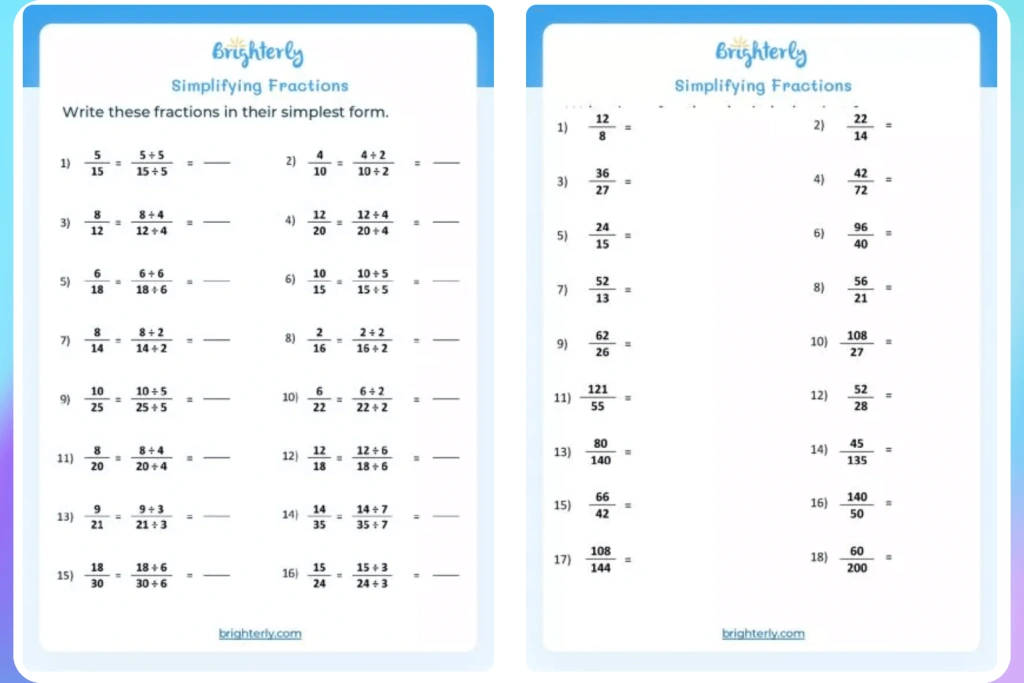
Brighterly’s free fraction worksheets help students understand fractions by teaching kids to identify fractions and convert them between equivalents before progressing to more complex math topics.
Conclusion
Children start to encounter fractions at a very young age, but it doesn’t necessarily mean fractions are easy. Even parents who try to support their kids’ math learning at home may face difficulties explaining fractions to their young ones. Incorporating fractions exercises through the lens of everyday life can help children grasp fractions concepts, but it requires parents to have enough time and energy to gather the necessary tools. In that case, professional math tutoring can save the day.
If you’re ready to hire a reliable math tutor who knows the best ways to teach fractions, you’re in the right place. Book a free demo lesson with Brighterly today, and make your kids do better at fractions with the best tutoring they’ll definitely love!

